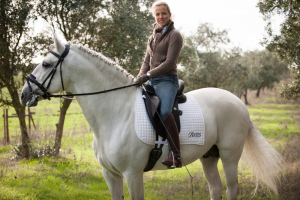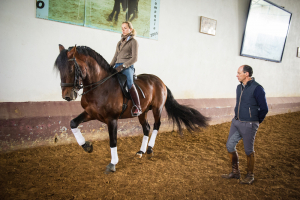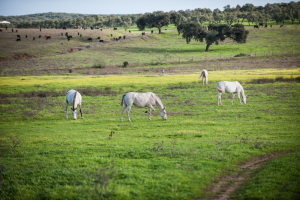Lusitanos Teach Corporate Leadership
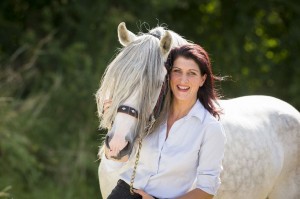
Management consultant Margit Dellian in Germany explained to me why the noble, sensitive, beautiful and highly intelligent horses from Portugal are particularly well suited as executive coaches. She created and founded http://www.equi-com.de/ management seminars with horses. Margit works almost exclusively with Iberian horses, including three handsome stallions.
I’ve been excited to do this interview with Margit for quite some time as I find it an extremely interesting topic. For 20 years I had my own company in Corporate team building, communication and management development in UK and around Europe. I was very fortunate to work with leading Global corporations at high level management. I found the most effective, long lasting results came from activities where course participants were interactive both physically and mentally. We used games, challenges physical and mental, outdoor activities and theatre skills in our courses.
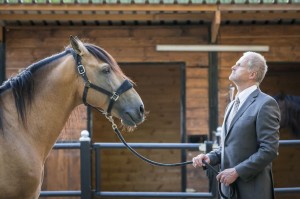
My work experience led me to firmly believe good communication is about ‘valuing our differences’ . To be good leaders we need to understand how we communicate both in the words we use but even more importantly how we portray ourselves through our physical presence and actions. The person or animal we are communicating with receives the signals we project from – our eye contact, our breath, our movements, our body stance, our energy – These subtle ways of giving out messages have much more impact than what we actually say. So if our subtle messages are apposing our verbal communication we are are giving a confusing impression.
Effective leadership requires quality dynamic communication. In order to be effective we must learn to become more aware of the person we are communicating with. We need to look to find the right ways to communicate with others – as they would prefer and not as we would prefer. It is amazing to think our equine friends can assist in finding better ways to communicate and lead others.
I met Margit in Portugal some years ago, she had a young Iberian horse in training at the same yard as I had mine. Margit was looking for a new member of her management team – preferably a dun Lusitano Stallion. The mission was set.
So one weekend a short while later Nuno Andrade (dressage rider and trainer) and I went horse shopping! The result was a stunning dark chesnut sport Lusitano for Nuno and the beautiful Atila for Margit.
ATILA is a purebred Lusitano stallion with the considerable height of 168 meters. He comes from the famous bull fighting lines at Manuel Tavares Veiga and was in his youth actually trained by a Portuguese bullfighter. When Margit saw him in the videos and photos she was completely smitten, he was immediately purchased. After some further training in Portugal with Nuno, Atila was transferred to Germany and has became a vital part of Margit Dellian’s equi-com® team. Instead of fighting bulls, he now works with German business leaders, helping them to become better bosses. With his golden fur, the compact, muscular body and characterful head he looks very impressive and makes a lasting impression on the seminar participants. At the same time he is gentle, sensitive and kind to his two-legged training partners. That makes him even as stallion suitable for this innovative form of leadership development.

Noble Partners
Just Iberian horses fascinate people like no other breed . They are the epitome of nobility , elegance and beauty.
It is not without reason that these horses were the first choice for kings, generals and nobles in ancient times .
Image : Dellian consulting /
Christiane Slawik reproduced free of charge
Tell me why are Iberian horses your first choice for working with top managers?
Margit Dellian: Even in ancient times , the noble horses from Portugal and Spain were considered as the first choice for the former “manager”, ie for Kings, Generals and Emperors. One can still see this through many of equestrian monuments today. I find them to be fine partners to work with as today they continue offer my course participants the same qualities they gave in the past.
So what do you think are the qualities that make these horses so popular?
Horses are always a great way to show leadership behaviour and to give the training partner an honest reflection of his body language, his appearance and his authenticity. Especially in the millennia breed of Iberian horses the attention was less on the large-framed movements – such as today in the sport horse breeding – but on characteristics such as character, human-relatedness, courage, intelligence and sensitivity, which are important for the cooperation between man and horse – otherwise many generals and bullfighters would not have not survived.
These qualities, which are often referred to as the “pious fire,” make these impressive animals to perfect training partners. In addition to two geldings and three mares, we work with three stallions of pure Iberian breed – which is unique in Germany – and we have thus far had only positive experiences.
Eye of a Lusitano
stallion Vasco da Gama ( original name Studbook Veterano ) :
How did you come up with the idea of organising leadership seminars with horses?
In August 2009, on the road between my office in Heilbronn and my office in Frankfurt the idea flashed before me: to train managers with horses! I came from a family business which is now run by my brother and I’ve worked self employed for over 20 years for mostly privately owned companies. I was almost obsessed with the idea to find a practical way to teach the mostly technically excellent Chiefs these simple but hard to mentally understand “soft skills”, like respect, trust, mindfulness, motivation, appreciation or presence – the true keys to successful leadership.
“soft skills”, like respect, trust, mindfulness, motivation, appreciation or presence – the true keys to successful leadership.
I had at that time already three horses -Two Iberian stallions and one Andalusian gelding.
In sort of self-experimentation I have had some enlightening experiences. When I showed up to see my four-legged partners after a stressful day at work distracted, stressed, tense and with my mind on the last meeting. I was not really present for my horses, they could not take me and my unclear instructions seriously. Threats, pressure, carrots and sticks also did not bring me any success. Surprisingly a calm, specific, clear appearance, a concrete and understandable objective with recognition in the form of praise and petting – without incentives, such as carrots , made these 600 kg muscle packages – including two self-confident stallions happy to participate and easy to handle. For an impulsive and quite dominant person like me, it took awhile for me to come to the realisation that my Iberian partners are a reflection of my own personality, my own leadership behaviour. At first it was uncomfortable to accept – it’s so much easier to project a bad result on one’s opponent! But the innocent, non-judgmental nature of horses leads us to self-reflection and only the honest confrontation with our own personality brings true personal understanding.
Who are your customers and how do they respond to your seminars ?
Our customers come from various sectors but mainly we work with managers from the automobile industry. Although these senior engineers are usually skeptical at first, when they have understood the connection between leadership and horses. Come to feel how the horses help them to a so called soft skills experience, they are usually enthusiastic. The CEO of a major automobile development company that works for almost all German premium brands (Audi, Porsche, BMW, Mercedes Benz) recently reported to me that a year after visiting our workshops three seminar participants out of four said that the equi-com® training with the horses was the best and most sustainable management training they had ever experienced. This is quite an achievement as they have had lots of management seminars before!
Horses accurately reflect the human body language and make their training partners realize how important their own appearance and their function as a model is. They motivate the seminar participants to self -reflection without judging or criticizing them – this is hardly succeed with any other training method .

Here Lusitano stallion Vasco da Gama ( original name Veterano ) working with a seminar participant. Image : Dellian consulting /Reprint free

That must have made you very proud Margit. Tell me About the equi-com manager seminars with horses, what goes on?
“What does the Company Leader or Manager learn from the Ross (German for “horse”)”? For the last five years, this is the question the participants of the equi-com® management seminars with horses have to answer. During the 1- to 2 day workshops entrepreneurs, executives and junior executives and mangers can experience with our horses, what skills a Boss must have in order to be happily and voluntarily accepted by their employees in practical work. Of all animals horses are probably the closest to humans in their social behaviour.
Our Mirrors
The horses mirror exactly the behaviour of their counterparts, therefore they are very useful as a manager trainer because they are acting as our reflection. The course participants experience one to one encounters with the horses in different ways for a first hand feeling. They also are able watch the interaction with fellow participants and the horses. We have developed different creative ways to enable individuals to have a positive, reflective 2 days and providing them with solid results to take back to the workplace. Thus support them in their future communications with their staff and customers.
I have found that the advantage for companies and organisations : During one workshop with horses is that the participants understand, what really matters for good and successful leadership and how it feels without role-plays and psycho-discussion. It was not without reason the name of common sense in English is also known as “horse sense”
 I understand you also have horse master Florian Mueller working with equi-com.
I understand you also have horse master Florian Mueller working with equi-com.
Yes Florian is world renowned as a horse expert and specialist in Iberian horses. He also has had 30 years of running his own leading engineering company. I feel very fortunate to have Florian on our team, he adds a lot of value to the work. Coupled with my experience we make a great, creative team.
Forian Mueller – here with Lusitano stallion Atila – is an expert in Iberian horses and has brought the first Iberian horses to Germany more than 30 years ago. The successful entrepreneur and renowned show rider trains the horse for the equi – com® seminars and conducts the practical seminar exercises. picture : Dellian consulting / Christiane
reproduced free of charge
It’s always a real pleasure to learn more about innovative people making new waves in the world. None more so than when our beloved Iberian friends are involved. It’s been very insightful to learn a little more about what you do. I have no doubts about the huge success you are experiencing and will continue to do so. I look forward to welcoming you again in Portugal.
Thank you so much and I wish you continued success in your venture.
Equi-com was inspired and founded by Margit Dellian, who has a degree in business administration. She has been running for 20 years a consulting company which offers communication and business management programmes.

Margit
To find out more contact: www.equi-com.de and www.finca-vera-isabel.de
Images: dellian consulting / Christiane Slawik reproduced free of charge
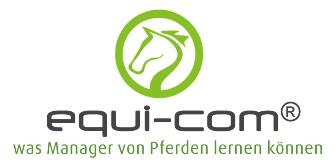
Looking for a Lusitano for your business check out the Lusitano we have to offer


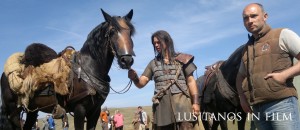
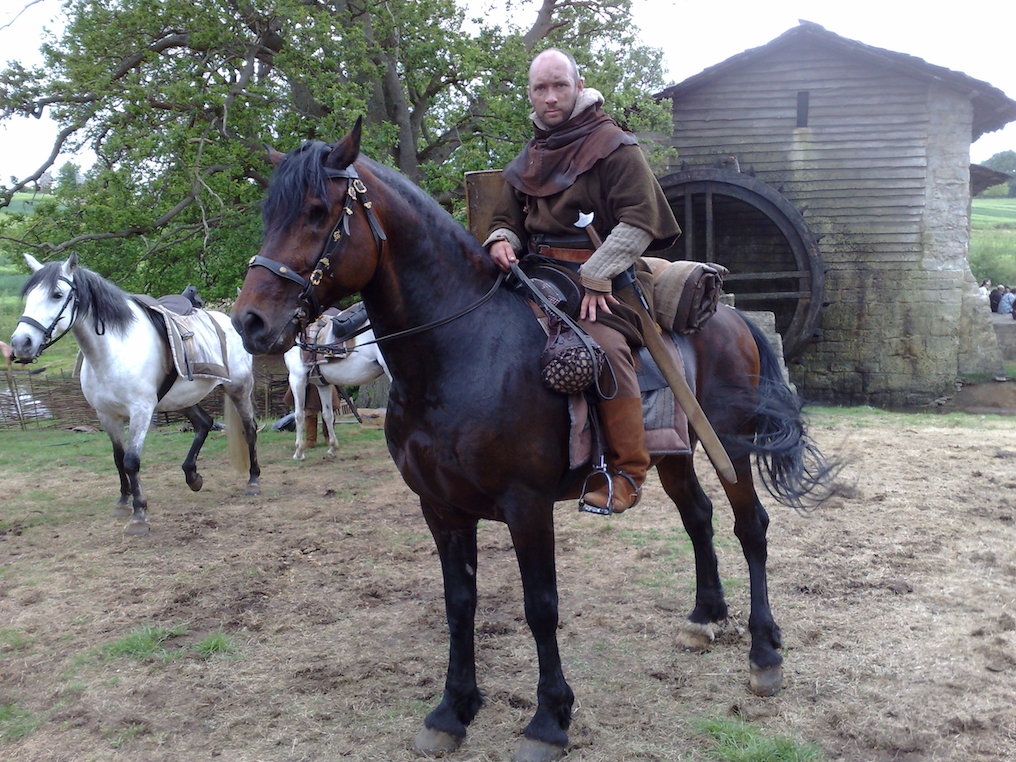
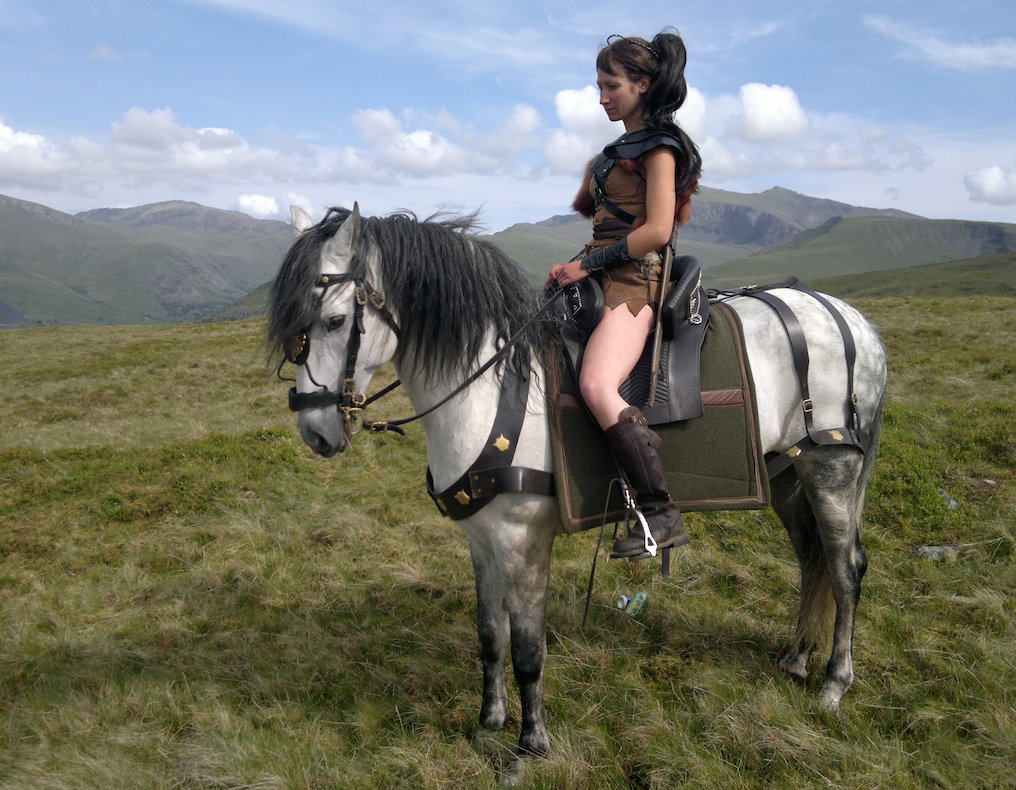
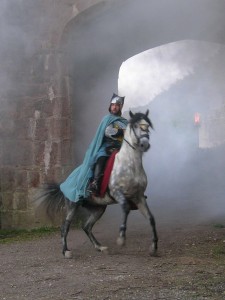
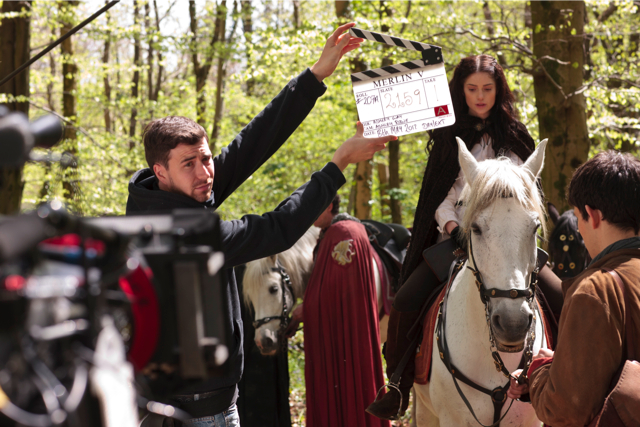
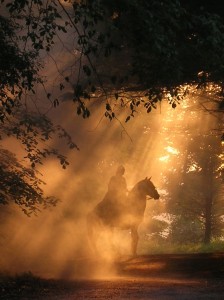
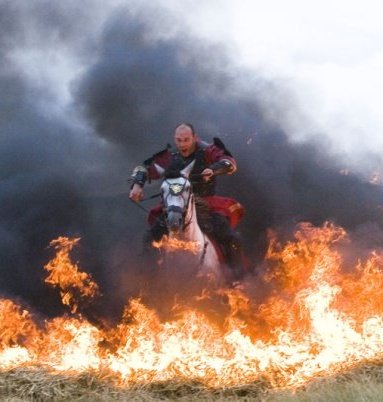
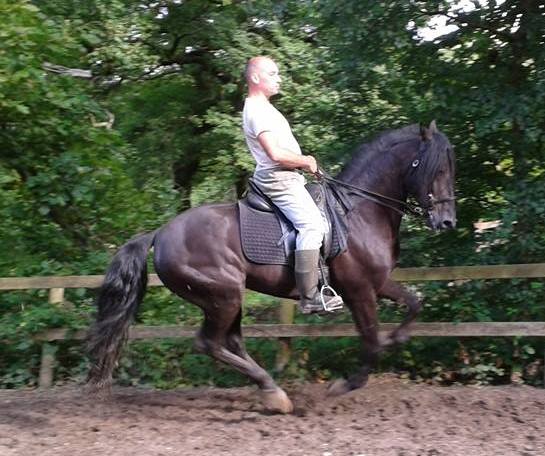
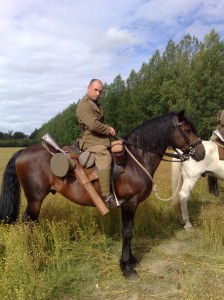
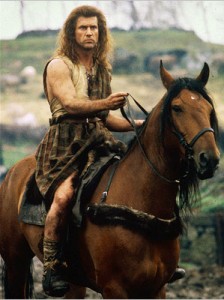
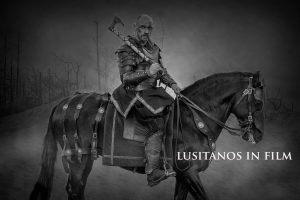
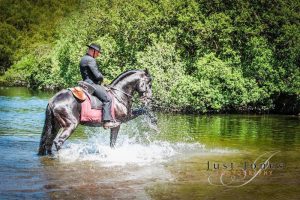
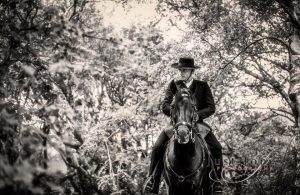
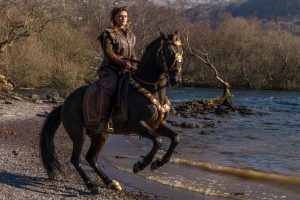
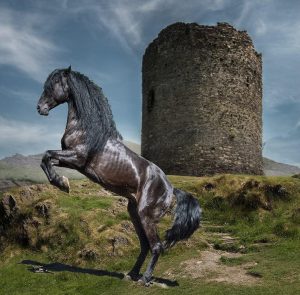
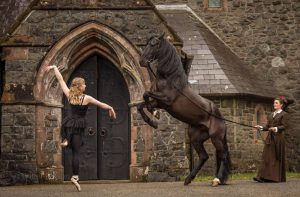
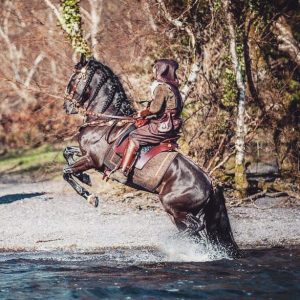
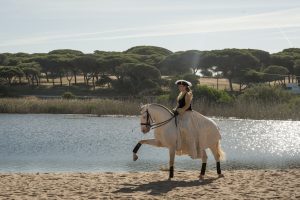
 Needless to say, it all made for a wonderful photographic opportunity, we had so much fun. Once finished we followed them back to their riding centre Quinta das Cinco Ferraduras – The Five Horseshoe Farm.
Needless to say, it all made for a wonderful photographic opportunity, we had so much fun. Once finished we followed them back to their riding centre Quinta das Cinco Ferraduras – The Five Horseshoe Farm.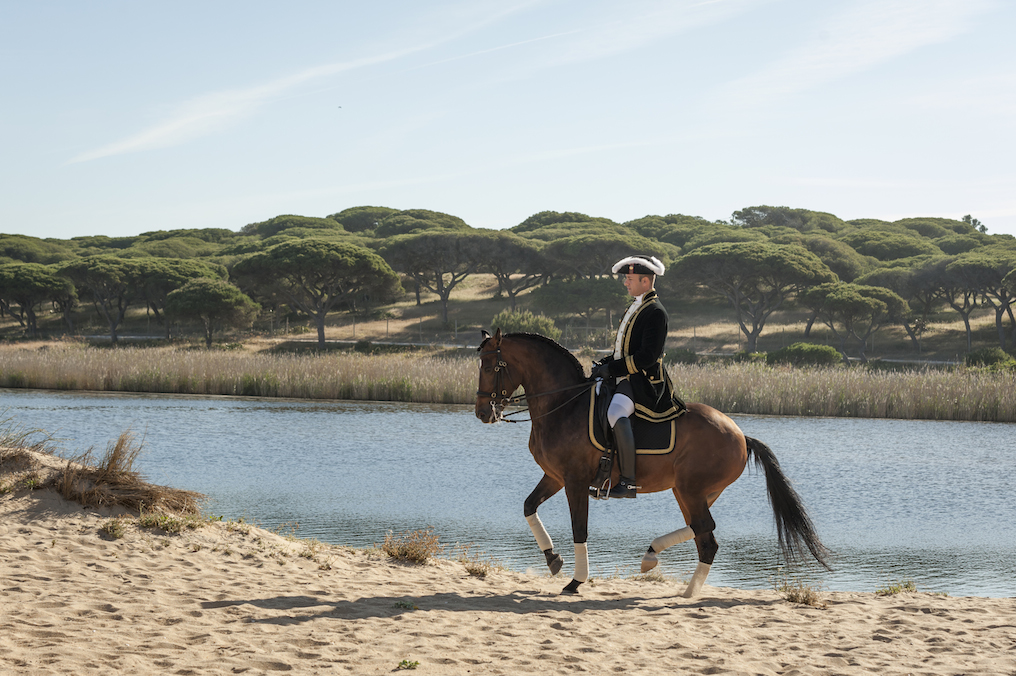

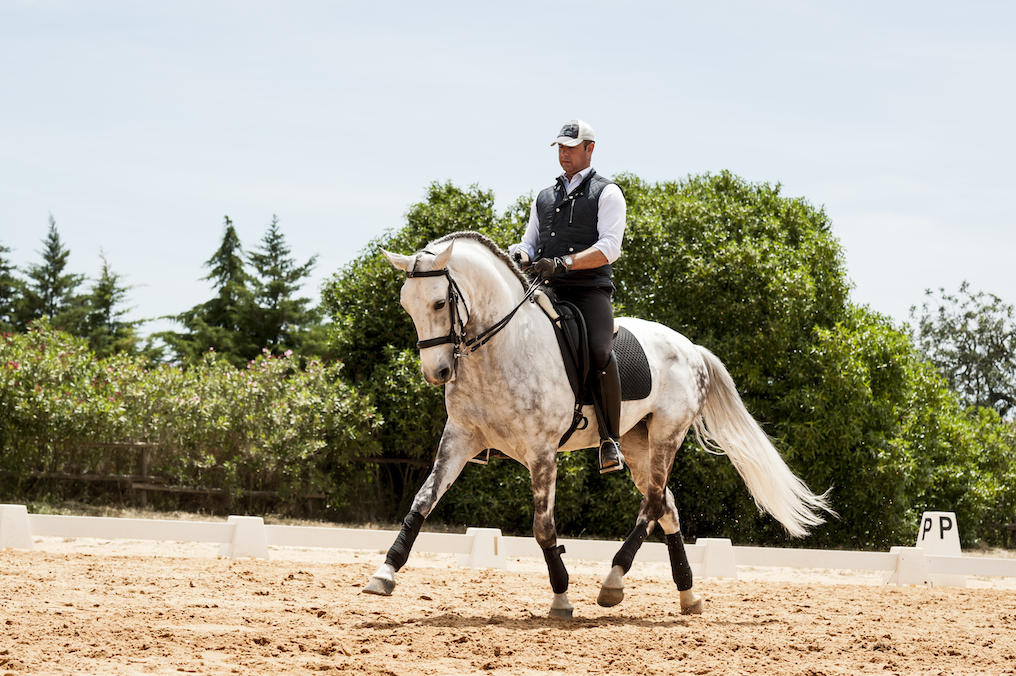
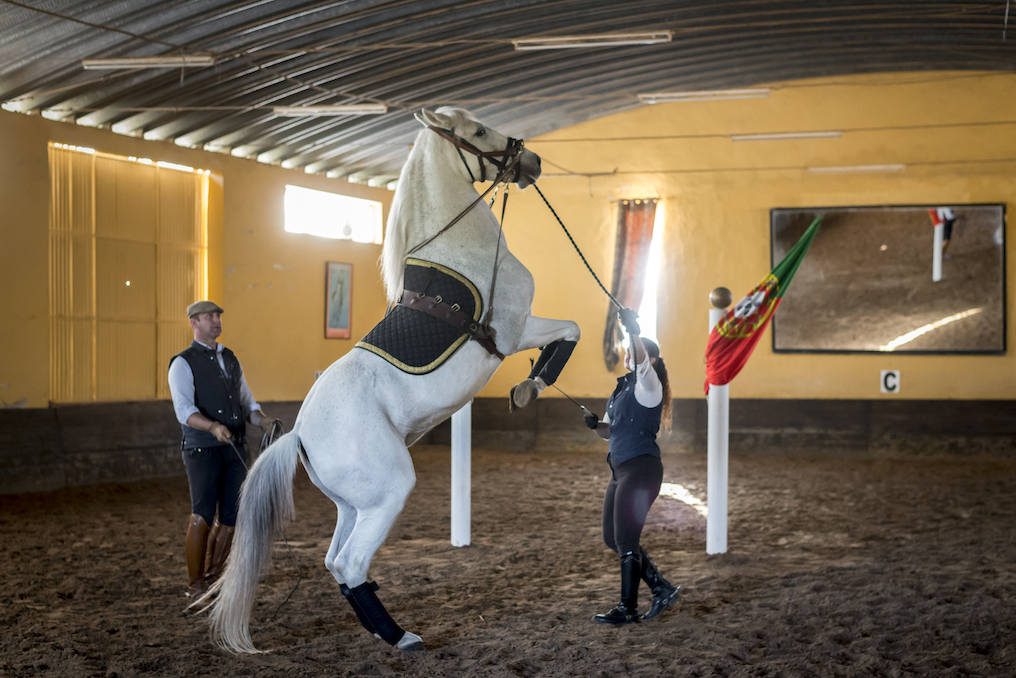 Centro Equestre Lusitanus is situated at Quinta das Cinco Ferraduras, in Loulé in the centre of what is often referred to as Algarve’s Golden Triangle.
Centro Equestre Lusitanus is situated at Quinta das Cinco Ferraduras, in Loulé in the centre of what is often referred to as Algarve’s Golden Triangle.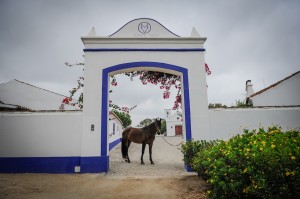
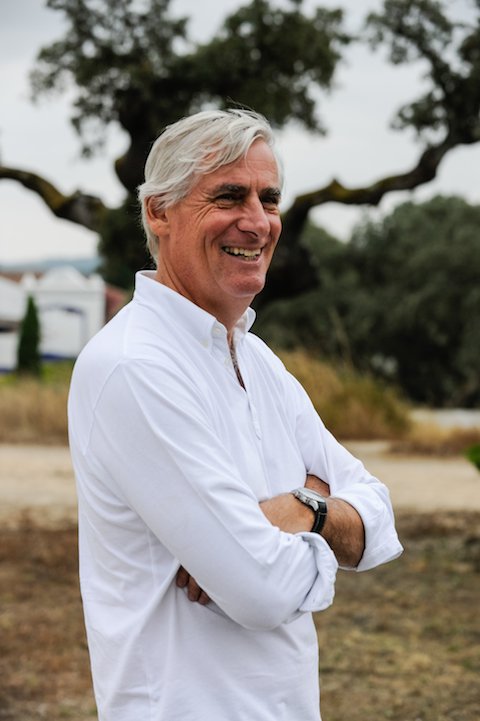 The resort is situated 7 km from Arraiolos at their stud farm (coudelaria). The property is in the heart of typical, almost prehistoric looking landscape of the Alentejo. Vast grey boulders, ancient cork old trees, holn trees, vine yards and long grasses. In the spring it’s an array of bright flowers which eventually turns to shades of greens and greys giving an almost modern Architectual feel. There’s a spiritual quality of times past and lingering thoughts what may have wandered the lands then. The views are wide open landscape with an expansive sky. At night the sky is a bed of bright stars made brighter for the absence of excessive light pollution.
The resort is situated 7 km from Arraiolos at their stud farm (coudelaria). The property is in the heart of typical, almost prehistoric looking landscape of the Alentejo. Vast grey boulders, ancient cork old trees, holn trees, vine yards and long grasses. In the spring it’s an array of bright flowers which eventually turns to shades of greens and greys giving an almost modern Architectual feel. There’s a spiritual quality of times past and lingering thoughts what may have wandered the lands then. The views are wide open landscape with an expansive sky. At night the sky is a bed of bright stars made brighter for the absence of excessive light pollution.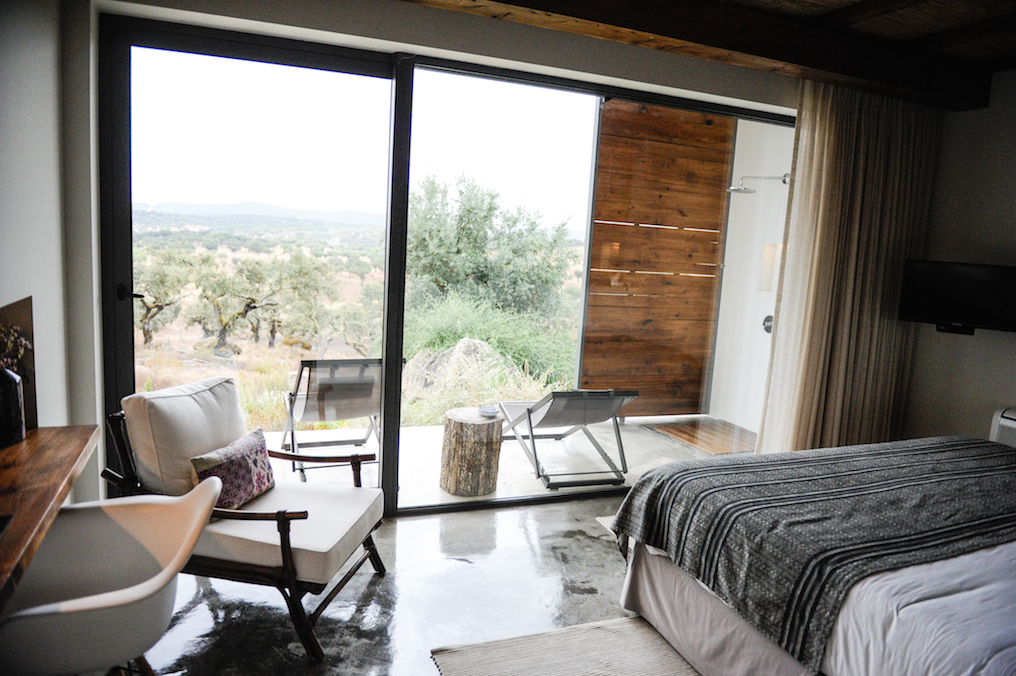 small, chic and limited to a certain area but here you feel you have the boutique-ness of modern styling and individual space but you also have a feeling of so much more space available to you and there is. I loved the bedroom suites which are very modern in design with comfort and ease to move around. They have super bathrooms with glass dividing walls and excellent showers.
small, chic and limited to a certain area but here you feel you have the boutique-ness of modern styling and individual space but you also have a feeling of so much more space available to you and there is. I loved the bedroom suites which are very modern in design with comfort and ease to move around. They have super bathrooms with glass dividing walls and excellent showers.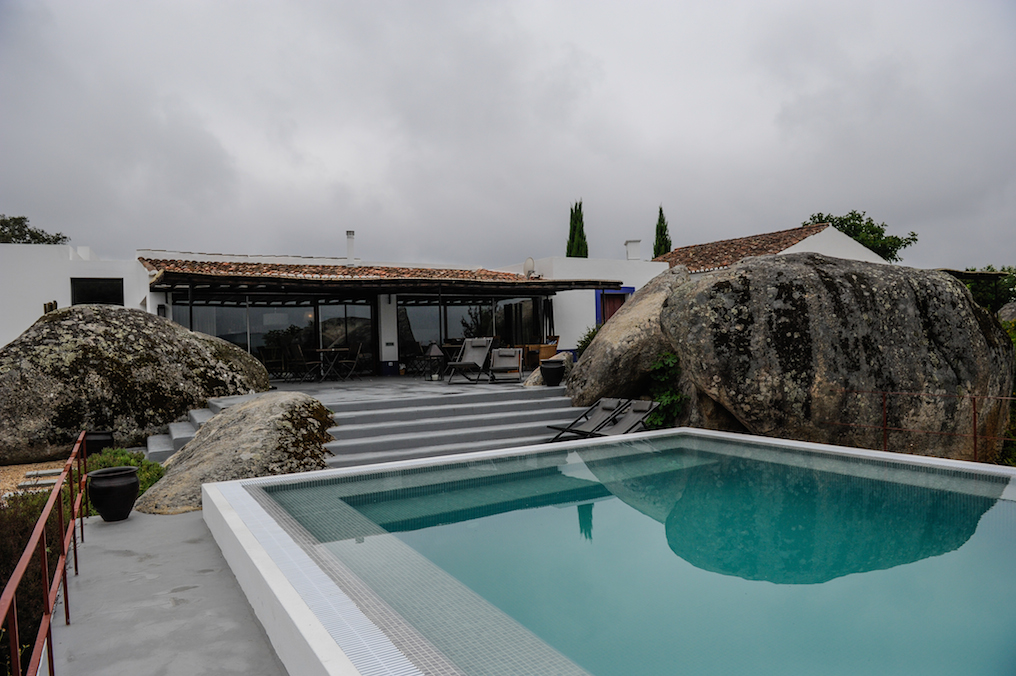
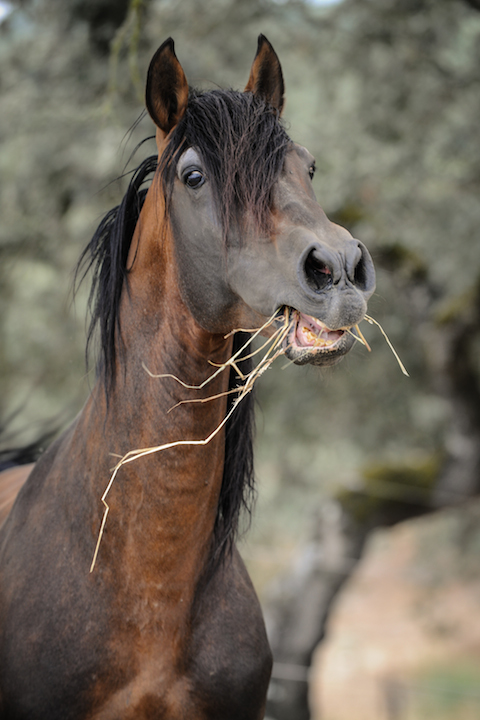 Dressage Lessons
Dressage Lessons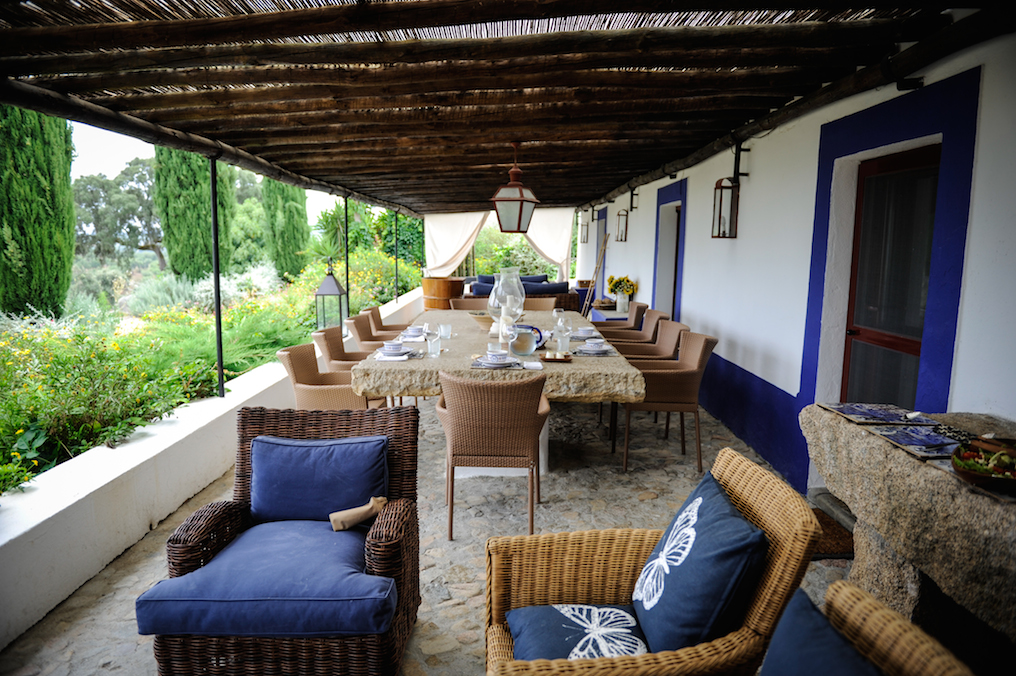
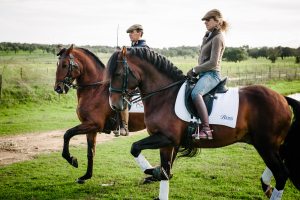
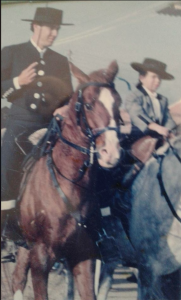
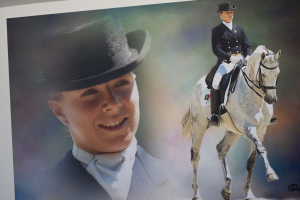
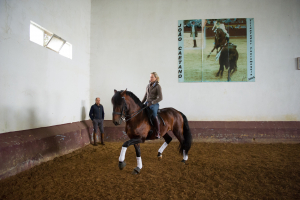
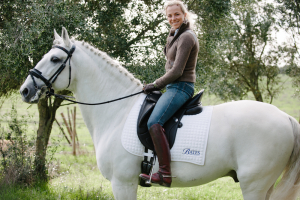
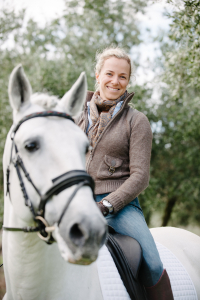
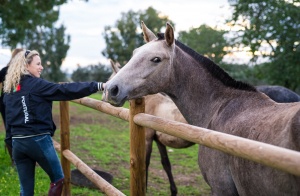
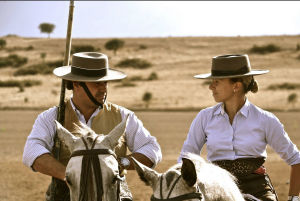

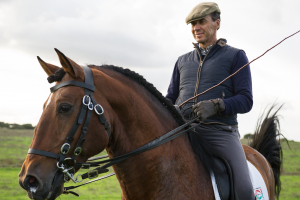

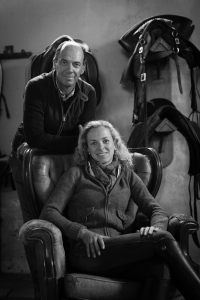
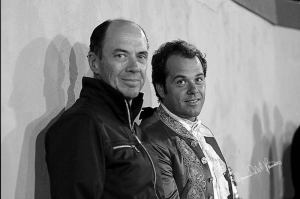 Paulo and his son Joao
Paulo and his son Joao